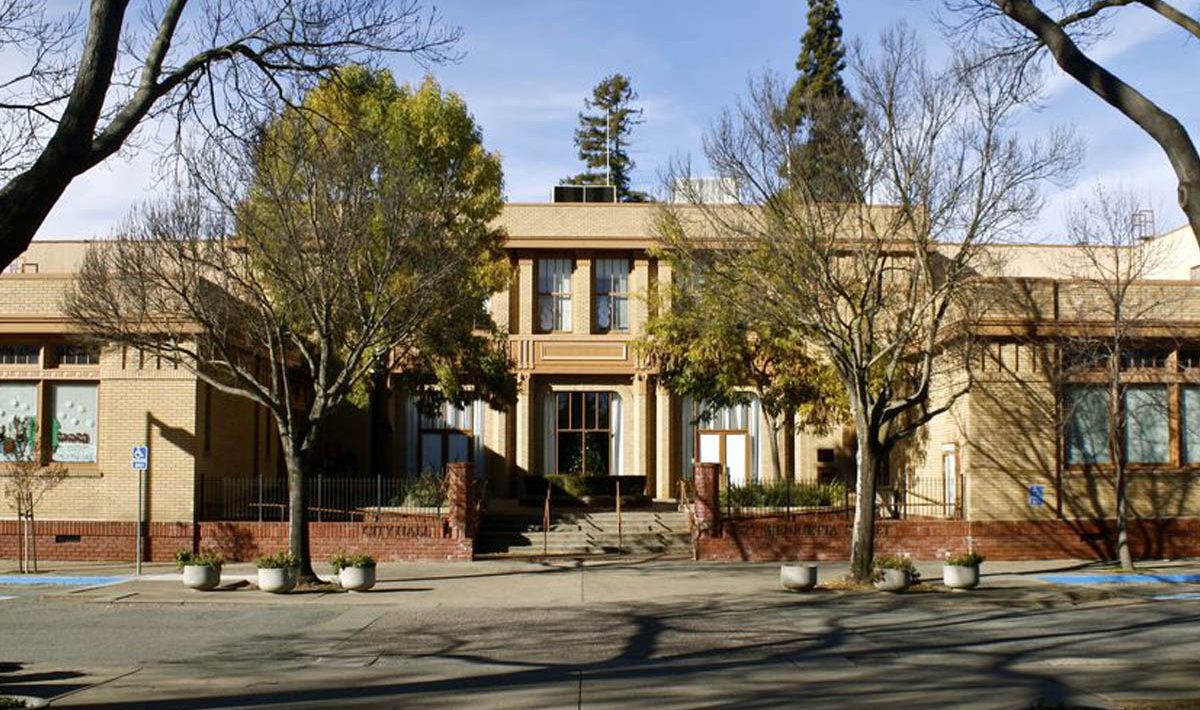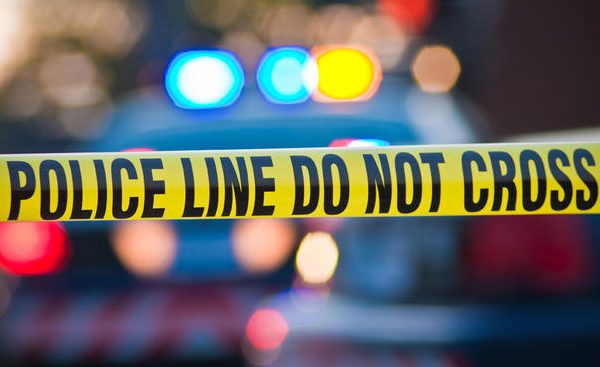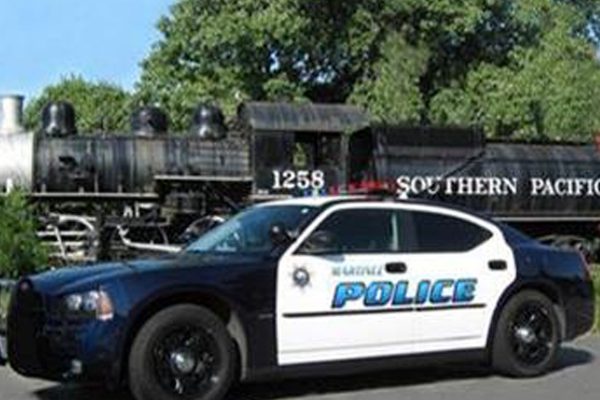Martinez City Council agreed Wednesday to pursue appointment of an anti-racism task force, and wants the Parks, Recreation, Marina and Cultural Commission’s opinions on policies for any future street murals.
The city has been reacting to the death of George Floyd at the hands of Minneapolis, Minn., police; the distribution of racist flyers in Martinez, Antioch, Pittsburg and the unincorporated community of Bay Point; and the attacks on a fast-tracked, permitted “Black Lives Matter” mural painted July 4 on Court Street by volunteers.
Shortly after the street section was painted, a white couple brought paint and rollers and tried to cover up the bright yellow lettering. They were stopped and the mural was repaired.
Two people, identified as David Nelson, 53, and Nicole Anderson, 42, of Martinez, were arrested later on misdemeanor warrants issued by District Attorney Diana Becton, who included hate crime among the charges of vandalism, possessing tools used for vandalism and violating civil rights.
The next day, a 30-year-old man identified as Joseph Osuna of Martinez was arrested and charged with brandishing a firearm and possession of a loaded and concealed weapon after someone waved a gun during an argument the mural. Martinez Police made the arrest a short distance from the mural.
Although the Council quickly issued a resolution denouncing racism, residents and other speakers at the panel’s Zoom meetings called for greater action, including the formation of a task force that would analyze racism in Martinez, including in the city’s own practices.
The Council agreed with City Manager Eric Figueroa’s recommendation that nine residents should make up the panel. However, they disagreed that the panel’s work could be wrapped up by December. Residents questioned why the task force couldn’t be a long-term commission with a larger budget than the $7,500 Figueroa had recommended.
The task force – or commission – should choose its own name, the Council said after hearing several residents say terms like “inclusive” and “equitable” in the initially-proposed name might not strongly express its anti-racism and anti-homophobic intent.
One resident, Natalie Moore, suggested “inclusive” and “equitable” are terms used to make situations “comfortable to white people,” while she called for making Martinez “hostile to racism.”
She suggested the city consider hiring Pacific Education Group to make sure both the appointments and the meetings themselves meet the panel’s anti-racism purpose.
Others questioned whether Martinez or its Council truly was anti-racist, explaining that “equity” has been used in the past to oppress nonwhites and suggests white supremacy. The term and would deter people of color from participating, some said.
Racism does exist in Martinez, said Craig Lazzeretti, who described a person whose experiences in local schools were so discomfiting that when he asked her to join efforts to make improvements in race relations, she said she was leaving the city instead.
Several speakers said having either the Council or police officers involved in any portion of the appointment process or in the task force itself would have a chilling effect on the panel’s work. Roman Ruddick said many panelists would fear police retaliation if they discussed racism in that department.
Justin Gomez, who submitted the “Black Lives Matter” mural permit application, said the task force could be an opportunity to “restore and build trust with people of color,” adding that non-white residents have “felt alone” and deserve “a seat at the table.”
Marlene Lerner-Bigley said a past city advisory panel on diversity didn’t have a very diverse membership. “It went by the wayside.”
Megan Leonard suggested the city slate community meetings before the task force is formed.
While one person suggested the Council consider two panels, one which had no white members even if they consider themselves allies of minorities, another speaker objected to excluding any single race.
One man said most people agree that “Black lives matter,” but he’s been troubled at hearing few solutions during several Council meetings at which speakers called for the task force’s formation. He asked other speakers to cite any city policy that is racist. The incidents that took place in Martinez’s downtown area don’t reflect city policy, but were the actions of individuals, he told the Council.
Another concern was how the city planned to make the public aware that task force candidates are being sought. Some speakers urged using multiple platforms to share that information.
Councilmember Noralea Gipner agreed, but told speakers they also need to step up themselves and spread the word. Not everyone reads newspapers or is active on every social media platform, she said. “Everybody has to be involved.”
A past member of the Council, AnaMarie Avila-Farias, said the Council has shown its own version of systemic racism in the way it divided the city into four Council districts after Malibu attorney Kevin Shenkman, representing a Texas activist organization, demanded the city end at-large elections or face the threat of a lawsuit.
She said the Council had practiced gerrymandering in drawing districts that extended from the waterfront south, said the city should form a citizen panel to redraw the district maps. “You created a policy against people of color.”
During the process of establishing those districts under the three-month grace period provided by the State Legislature, the city’s demographics consultant told the Council the company found no racial enclaves in Martinez, with the exception of four contiguous homesites that housed Latino families.
Once the 2020 United States Census is complete, both Martinez and the Martinez Unified School District, which also adopted area voting after receiving a Shenkman demand letter, must redraw their district voting maps to accommodate any shifts in the population.
The state of California also will be drawing its districts, and already has a policy of having an appointed citizens’ panel design those maps.
In response to some speakers’ questions, Figueroa said the proposed $7,500 budget was flexible, and his office could authorize an increase without waiting for Council approval.
While the city wants a diverse makeup of the task force’s membership, some speakers wondered what was meant by diversity in advocacy. Figueroa answered by using himself as an example.
Some might expect him to be an advocate for Mexican and Colombian causes, based on his ethnic background. But his advocacy interests might lie elsewhere, he said, and he wouldn’t assume a person’s advocacy interests based on their heritage or gender identity.
Figueroa said his suggestion that the panel give the Council a report by December reflected the desire expressed by both the Council and the public to see the task force take definitive action. But it’s not an absolute deadline.
Applications could be available as early as July 29, and would be posted on the city website, Figueroa recommended. Applications would be due no later than 5 p.m. Aug. 19. Candidates woule be interviewed by Aug. 27, and the Council would choose the nine members at its Sept. 2 meeting.
It would lead community conversations, and may take over the police town hall proposed by Police Chief Manjit Sappal. It also would be tasked with reviewing city policies, procedures and programs. The task force would develop recommendations and submit them to the Council.
While the Council heard calls for others to select the task force members, Mayor Rob Schroder said that the Councilmembers were elected by residents; appointment of the advisory panel is the Council’s responsibility.
But Councilmember Debbie McKillop said she wanted the city to consider getting help in forming the panel. “I believe there are professionals schooled in implicit bias,” she said, adding she wanted the city to “get this right.”
The Council will get a look at the task force application at its next meeting, 7 p.m. Wednesday, July 29, which again will be a Zoom meeting because of pandemic restrictions on public assembly.
Vice Mayor Mark Ross, who said he would take what he learned about terminology to the Bay Area Air Quality Management District, of which he is a member, and suggest the district consider changing its own discrimination analysis panel’s name.
He said he wants to learn more from the task force. “We all have blind spots,” and people don’t realize they have them until they’re pointed out.
Earlier in the meeting, the Council reaffirmed its support for the Black Lives Matter mural on Court Street. It, too, has been the subject of public debate. Gipner said she didn’t realize how much racism exists in Martinez until she heard from residents who objected to the painting.
“Racism is endemic in our society,” Councilmember Lara DeLaney said. “It’s inevitable that it exists unless you take the effort to stamp it out.”
She said she welcomed City Attorney Jeff Walter’s advice that the mural expressed a government viewpoint and was a joint event between Martinez and private citizens.
Martinez has say about what can be painted on city-owned streets, and does not have to allow others to paint their sayings on the pavement, he told the Council.
Figueroa reiterated the mural was permitted as temporary, although no time frame has been established for removal.
Ross agreed that the PRMCC is the city’s “arts” panel, and its arts subcommittee should have a say in starting the Commission’s development of a city policy recommendation for any future temporary pavement murals or expedited art.
The Commission already has a procedure for recommending acceptance of permanent art displays, such as murals throughout the town, including two on Main Street Plaza, as well as the upcoming illustrations that will be placed on certain utility boxes.
Unlike the unprecedented Black Lives Matter mural permitting, which was approved at staff level, the PRMCC’s approval process takes place at public hearings, allowing residents to preview art proposals in a transparent manner at officially-noticed meetings.
The PRMCC also will be asked to review its existing procedures as well as to develop new ones for temporary art, and submit its various recommendation to the Council.




